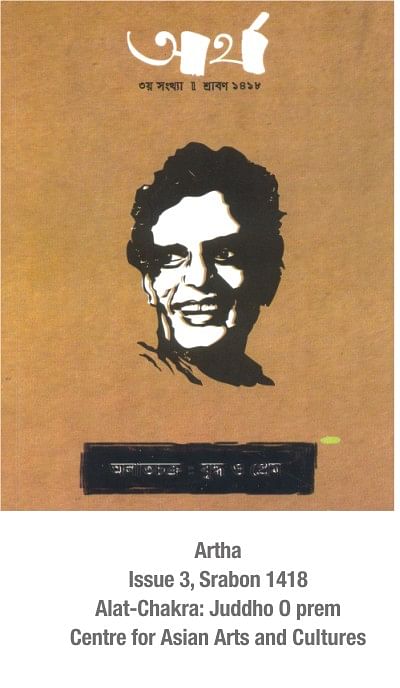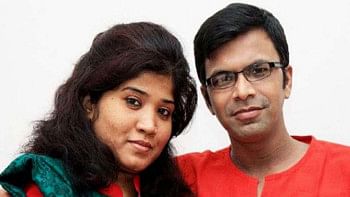In the circle of fire

Ahmed Sofa, one of the most distinct of intellectual voices in post-liberation Bangladesh, wrote several novels that have made a stir in the traditional intellectual environment of Bangladesh. He was the seer of his time. His writings widen the minds of his readers. His Alat-Chakra (The Circle of Fire) is such a novel It is not long but it holds the purana of war and love on its palm. This purana is composed against the backdrop of the liberation war of Bangladesh. Through depicting the lives of the refugees of Bangladesh in Kolkata, India, during 1971, it has portrayed the relationship between India and Bangladesh of that period and the mentality of the people of these two countries towards one another. The novel is in the first person narrative, told by Daniel, a personification of the author himself. It was first published in the Eid issue of Nipun, a Bengali weekly, in 1985. Then a new version was published in 1993.
Artha, a Bangla journal of the Centre for Asian Arts and Cultures (CAAC), has published the first version of Alat-Chakra in its July 2011 issue. Salimullah Khan, Chief Editor of Artha, has pointed to the significance of this novel in his article 'Juddho O Prem' (War and Love). He says about the background of this novel that Ahmed Sofa used to say he would write a novel named The War that Was Betrayed about the liberation war. Sofa thought that the toiling masses of the country could not gain the fruits of this independence. To explain why it has not happened is the objective behind writing this novel.
The protagonists in the story are Daniel and Tonu, who is Tayeba in the later version. He with many other refugees from Bangladesh was in Kolkata during the war. Three times he was denied the chance of taking part in the war and had been told that a creative person like him had useful things to do other than fighting in the field. He witnessed in his heavy heart how cheap Joy Bangla had become in Kolkata. The debauchery and profiteering in that land by some influential persons from his home distressed his heart. His fiancé Tonu, suffering from some complex illness, had been in hospital. This distressed him further.
The inhuman plight of the refugees in India and the role of the Indian government in our liberation war have come out vividly through some small incidents and references. Under the protection of the Communist Party of India (CPM), plays were then staged in which characters said, 'Yahia-Indira ek hay' (Yahia and Indira are the same). The trickery of keeping Maulana Bhashani out of the war scene is also touched upon in the story. Tonu died on the night of December 15, according to the 1985 version. Daniel witnessed the celebrations in Kolkata. He saw the Indian flag with the Ashok Chakra flying on the top of every house in Kolkata and experienced the fall of Dhaka and the birth of Bangladesh in 1971.
While we have been trying to revitalise our relations with India in these present times, a reading of this novel can help us look into the matter in a more realistic way. Nur Mohammad and Syed Monzoor Morshed have also discussed Sofa's fire circle in this issue. An essay by Ahmed Sofa and some writings on him by others also find place in this work. This issue of Artha is a valuable document on Sofa's Alat-Chakra.

 For all latest news, follow The Daily Star's Google News channel.
For all latest news, follow The Daily Star's Google News channel. 



Comments